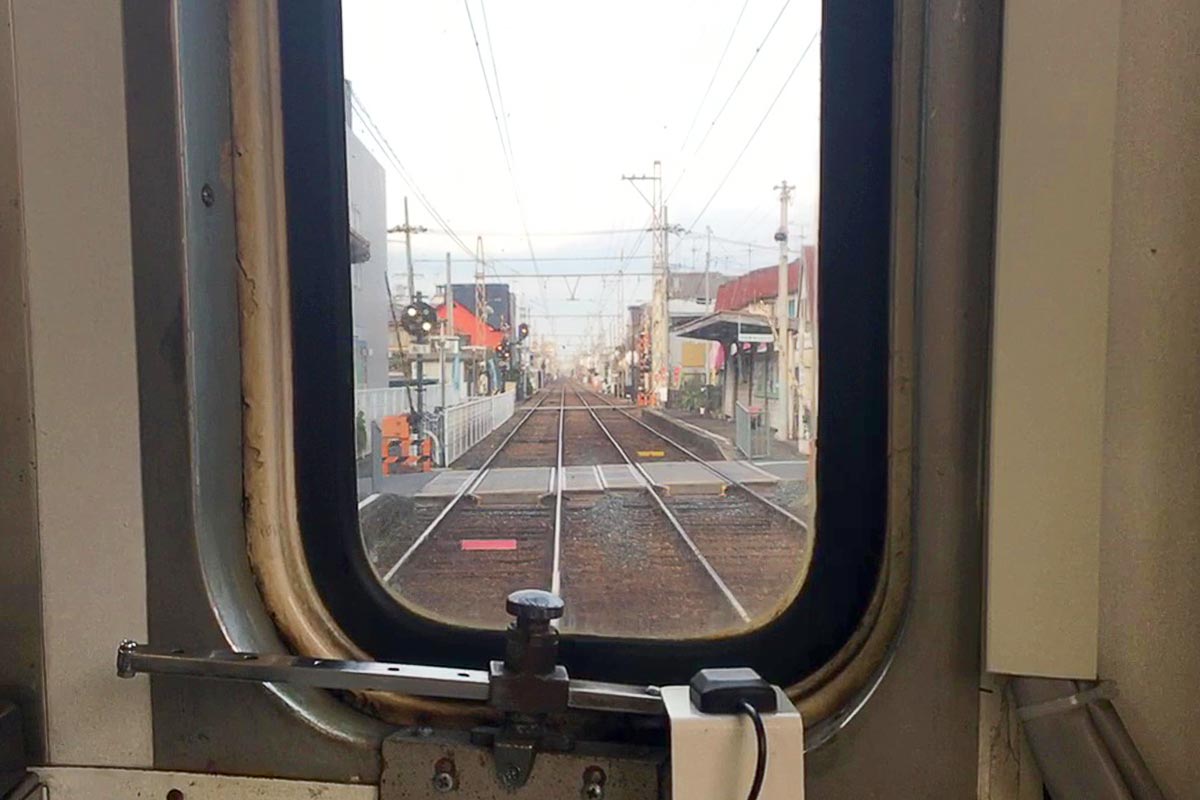
Another day off, another excursion into places near my home that I am unfamiliar with. Save time and money like I did: do some mini-traveling!
Masayo, my oft-game travel partner, and I enjoyed our unplanned and unresearched trip to Takayasuyama a few days ago, so we went mini-traveling again on the next day we both had off. This time we set out to explore the Hankai Tramway, which is a streetcar that runs between the city of Osaka and Sakai, a smaller city just to our south.
As usual, our rules for mini-travel were:
- Pick a place nearby that’s not too hard to get to, but about which we know little or nothing.
- Don’t do any research beforehand.
- Have no particular plan in mind. Just follow the beckoning of the travel gods at each stage.
I’m loving this mini-travel idea. It satisfies the desire to keep the intoxicating spirit of travel alive between big trips, a need that other travelers have noticed too.
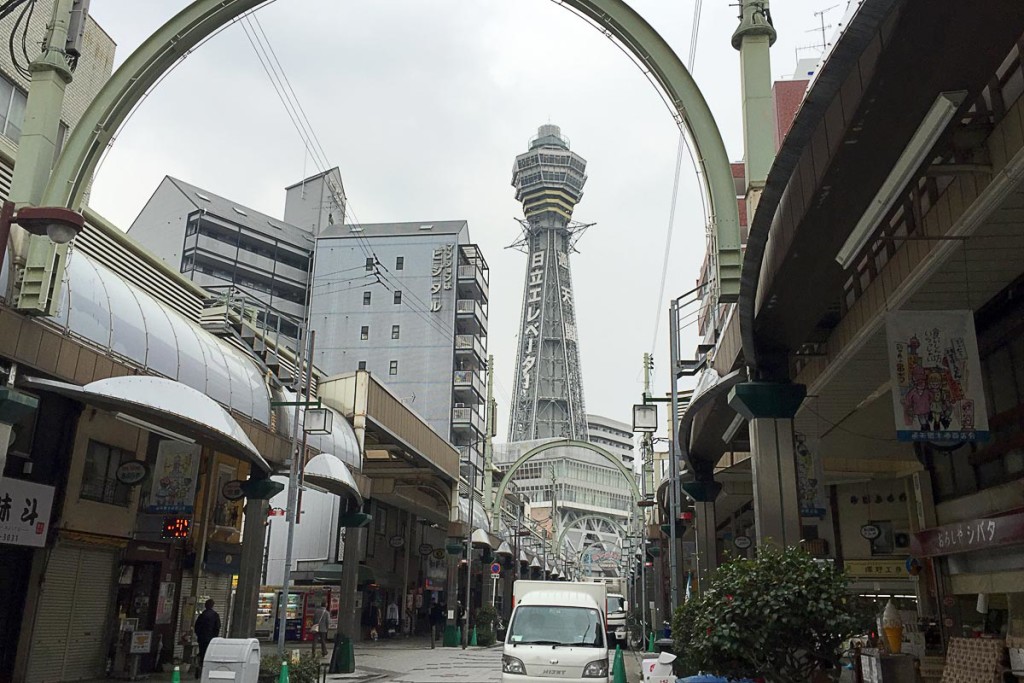
Tsutenkaku tower, as seen from Shinsekai shopping street.
Ebisucho and Tsutenkaku
We started in Ebisucho, an infamously gritty part of Osaka – what locals sometimes call “deep” Osaka, where homeless people sleep in boxes in front of adult theaters and are ignored by businessmen and schoolchildren checking out the sites, such as they are, and the legendary kushikatsu restaurants (fried stuff on skewers).
The Hankai Tramway is comprised of two lines that form a Y-shape, the Hankai Line and the longer Uemachi Line. The tops of the “Y” are the stations of Ebisucho and Tennoji-ekimae in Osaka; some trams only go as far as Abikomichi while others go all the way down into Sakai City and tramway’s last station, Hamadera-ekimae.
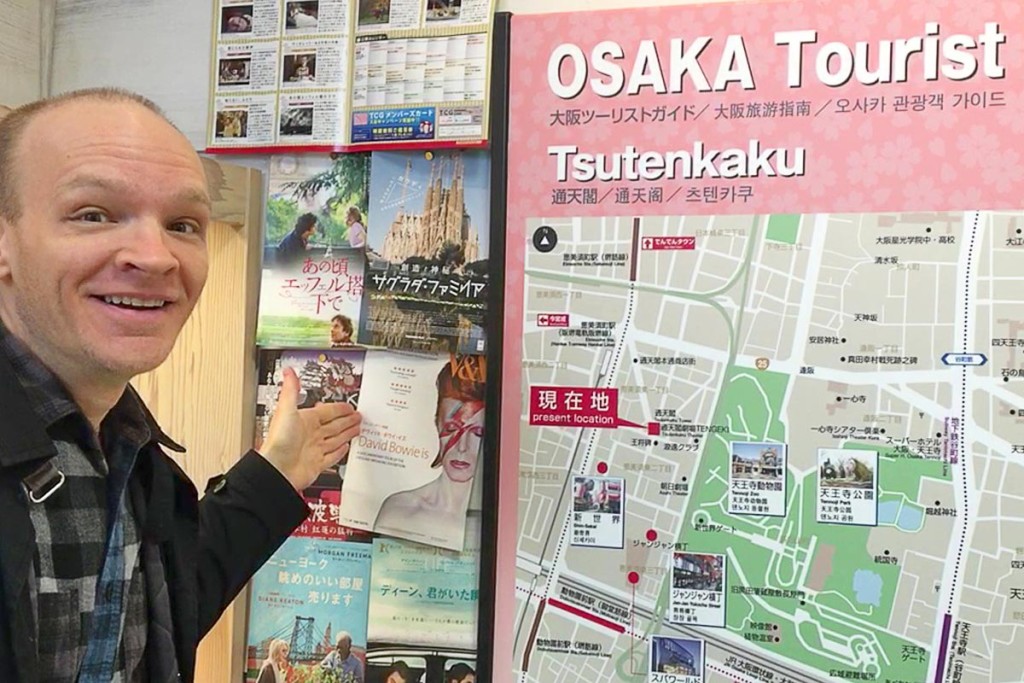
David Bowie flyer in Tsutenkaku. I like this tower already!
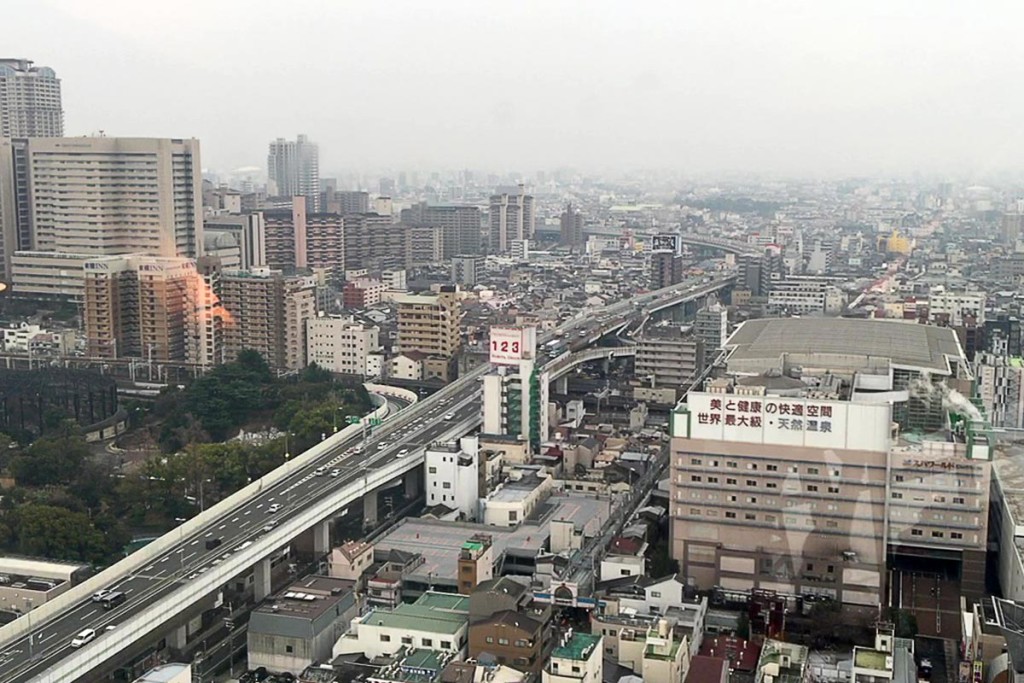
View of Osaka from Tsutenkaku.
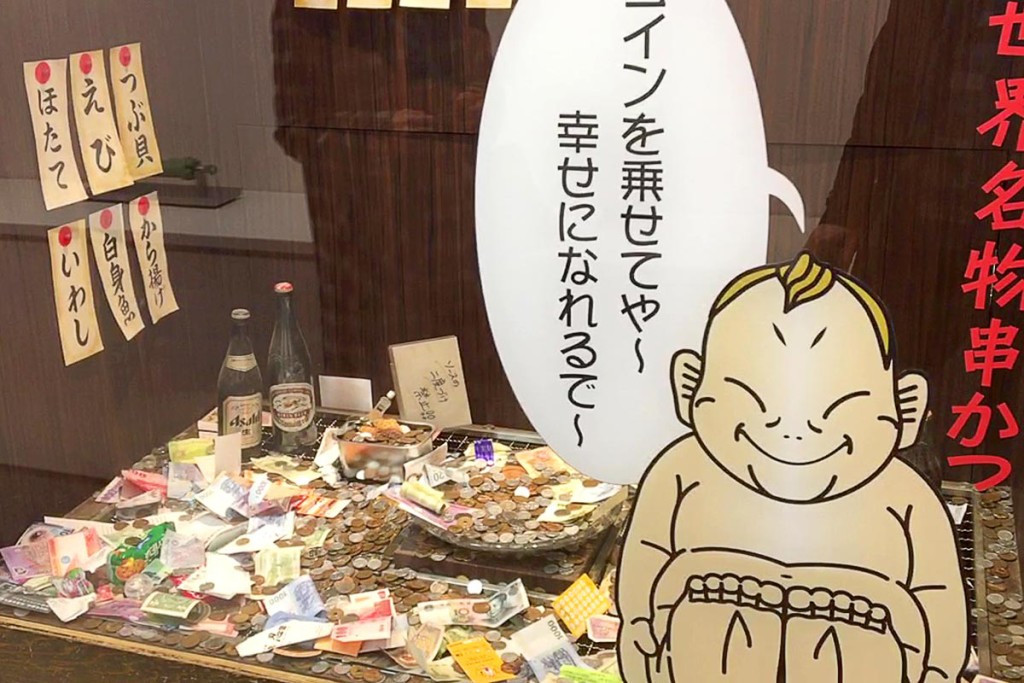
Billiken, and some of his international currency donations.

Alternate versions of Billiken.
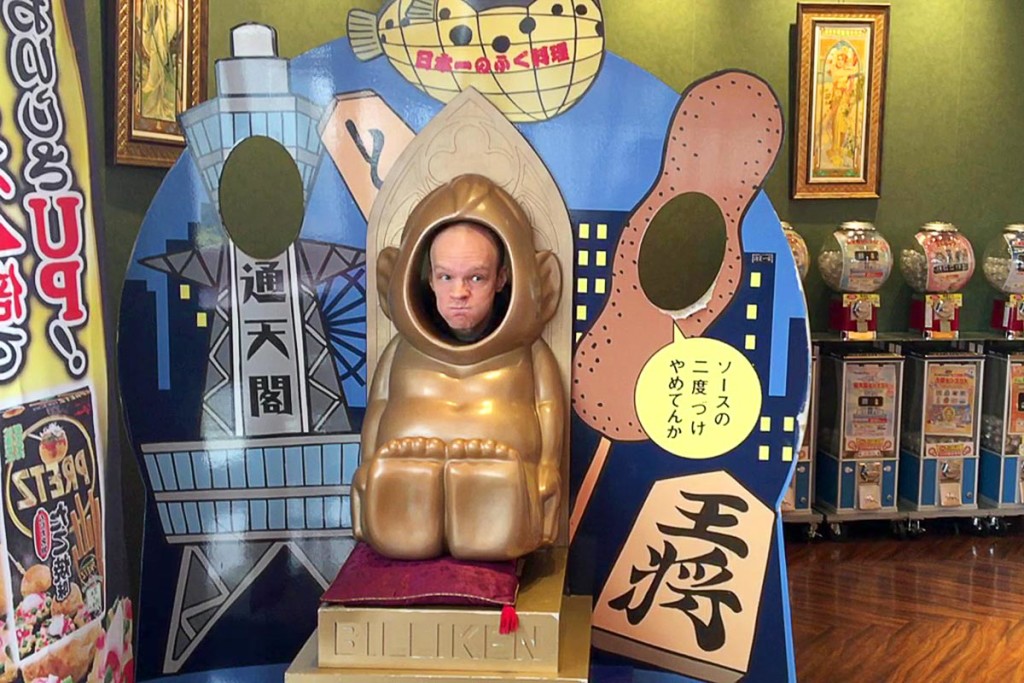
Tsutenkaku: Osaka’s tower
Before getting on the Hankai Tramway, though, we just had to go up to the top of the tower called Tsutenkaku, one of the main symbols of Osaka City. I’ve lived in Osaka for several years, and have been to Ebisucho countless times, but had never actually been to the top of this tower.
It cost ¥700 each, and was a quick elevator ride up. The Ebisucho area is known for its mascot, a grinning Buddha-esque figure called Billiken, “the god of things as they ought to be”. If you see a statue of Billiken (and you will, many of them!) you rub his toes to get good luck.
Inside Tsutenkaku, there are endless gift shops sponsored by the Glico snack food company you have to go through, plus lots of statues of Billiken. But there are also really nice views of Osaka; we could see far away to Osaka Castle, the Kyocera Dome, and even Cosmosquare and the bayside. Osaka shrank before us. Even Abeno Harukasu, Japan’s tallest building (if not structure) and a next-door neighbor of Tsutenkaku, didn’t seem so big from up here.
Back down at ground level, we decided against lunch at a kushikatsu place because that is a known thing; we are after something new and unexpected. So it was time to start the trip proper.
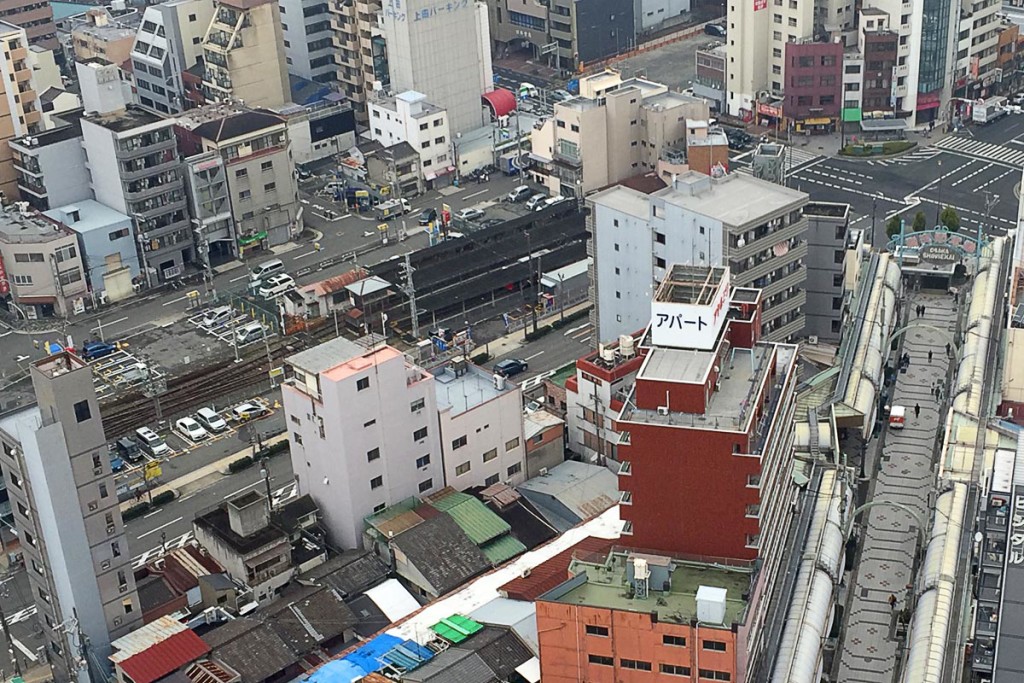
The black stuff in the center is the roof of Ebisucho station on the tramway; to the right is Shinsekai street where we started.
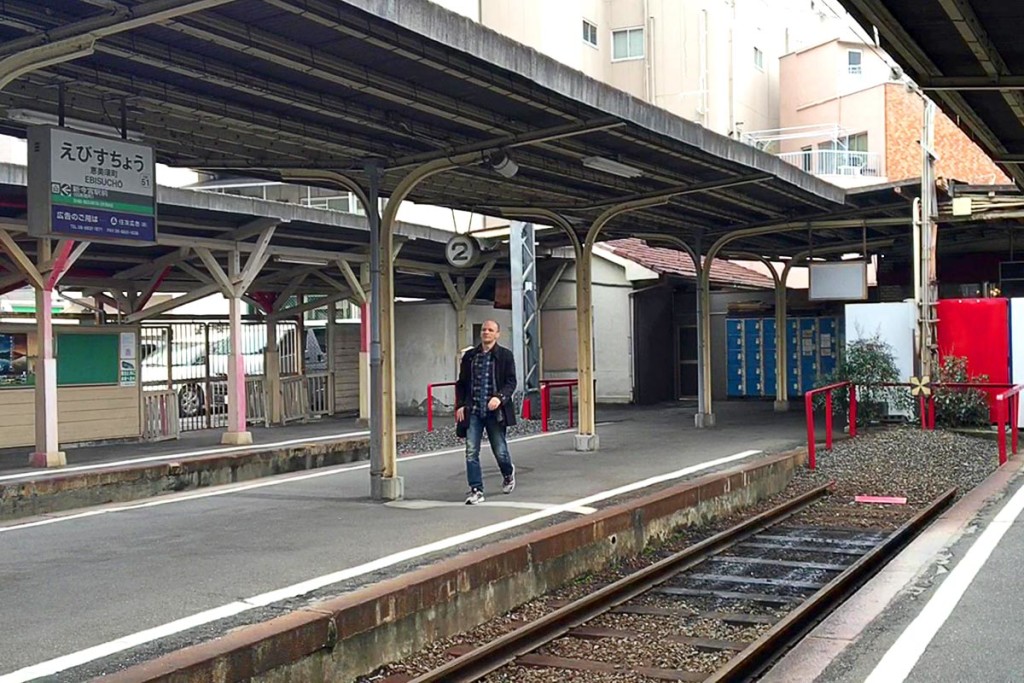
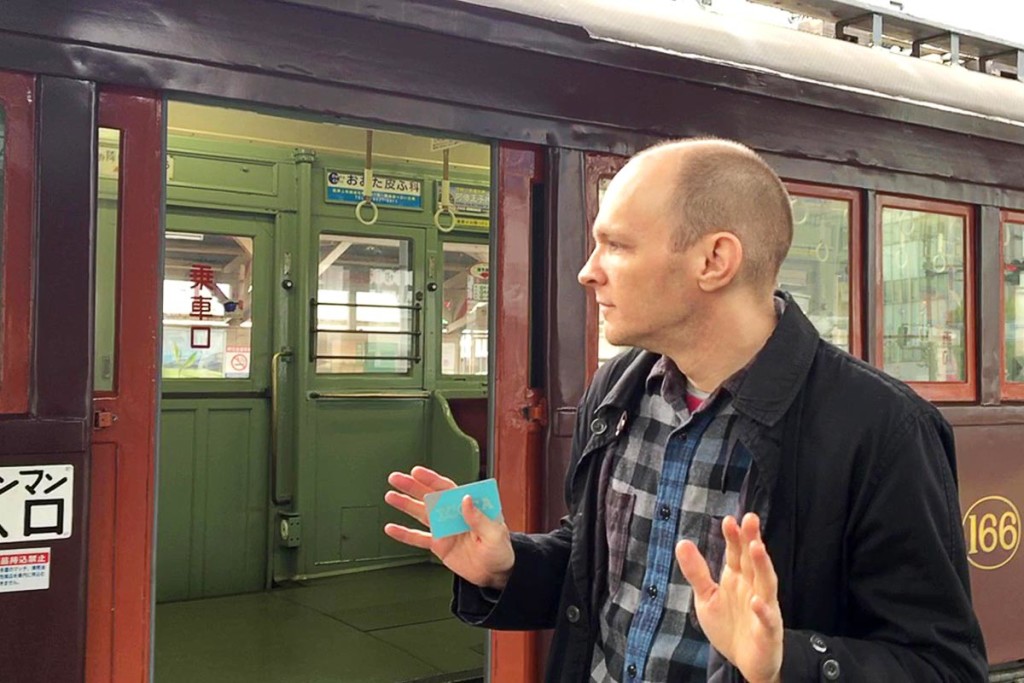
The Hankai Tramway from Ebisucho
The tram comes two or three times an hour, and as we waited on the small platform I was excited to see the tram arrive: one single car, with one driver. The tram was ancient and wooden-looking, and the few others on it were using it for transportation, not fun. Only Masayo and I seemed to really be enjoying it.
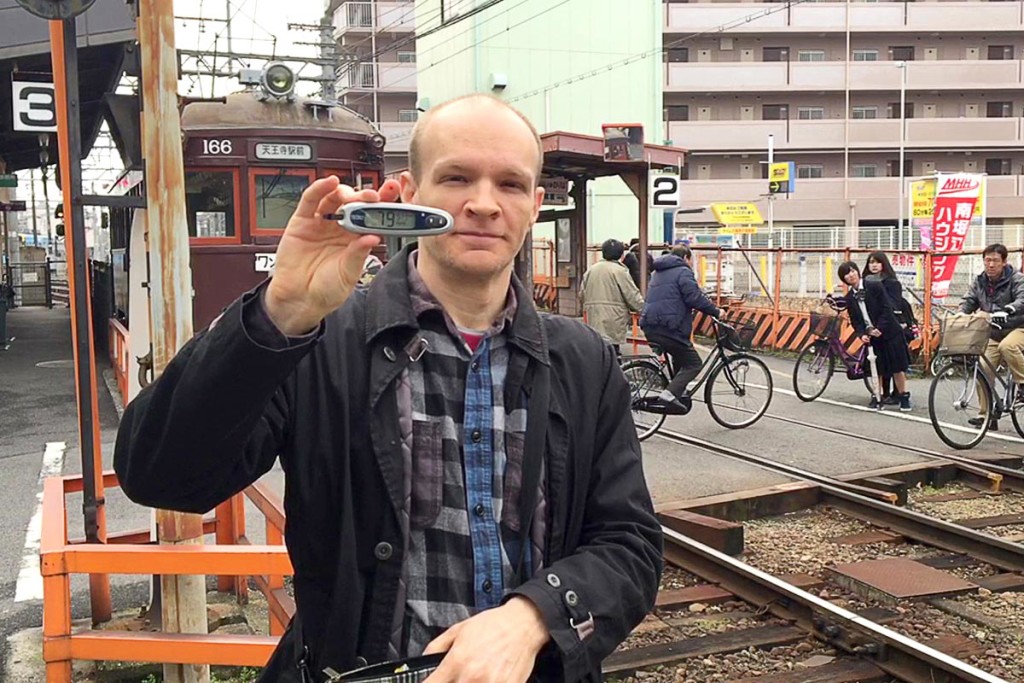
#bgnow 79 at Abikomichi station, in the middle of nowhere.
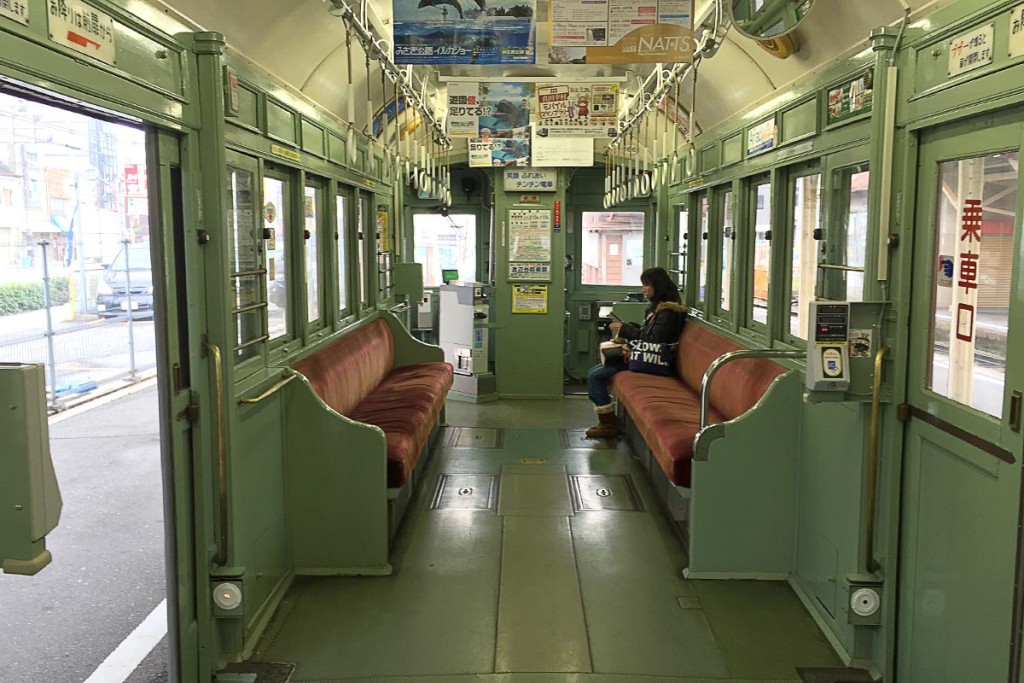
Abikomichi
Our tram wasn’t going all the way to the end, so we got off at the last stop, Abikomichi. I checked my blood sugar: 79. We went looking for lunch.
Abikomichi is a quiet area, but there is a shopping arcade. All the shops seemed to be closed, though. We only saw one restaurant, and I wouldn’t have even noticed it if Masayo hadn’t pointed it out. It was actually right by the tram stop, and was a typical Japanese set-course place called Tamatekan (玉手館).
One other customer was inside the dark, wooden, traditionally-decorated place, and two women were running it. Masayo and I sat at a large square table with a middle section for cooking with a metallic fish suspended over it. It wasn’t being used, but it was cool.
We ordered set meals; I got one with rice, fried pork cutlets, tofu salad, and soup. And a big frosty beer, huzzah! Being only 79, I ate nearly the entire meal before sneaking off to the bathroom to take my Humalog. Post-bolusing with a vengeance.
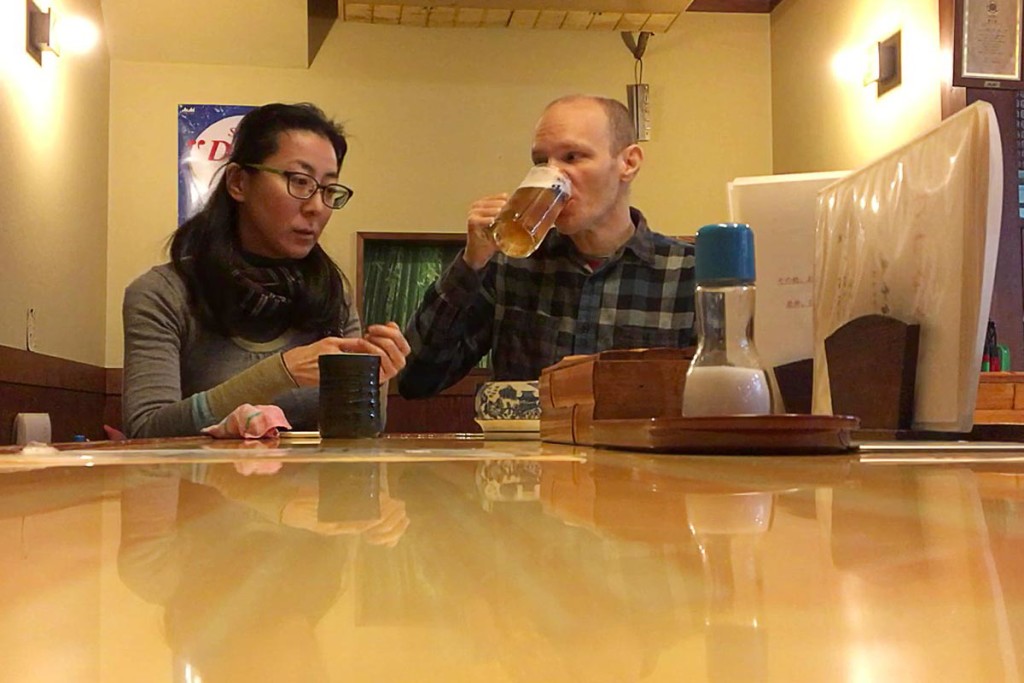
Then it was back to the tram. Making sure the train we were getting on was on the Uemachi Line, which goes all the way to the end, we debated where to actually get off. “Wherever a station strikes our fancy” was the real answer, but it was soon decided to go all the way to the end and then see what happened.
Hamadera
The end, Hamadera-ekimae, is in Sakai City, but a quiet part of it with few buildings and a big park called Hamadera Park. In fact, the park extends partly into Takaishi City, which I’d never even heard of.
We strolled around the park a little bit. In addition to a nice fountain, there is a great section full of curvy and sideways-growing trees, and big stone monuments dedicated to poets from a thousand years ago.
Apparently, what is now Hamadera Park used to be a popular relaxation spot for beach-goers. It isn’t on the beach anymore; the sea has been filled and so the coast is a ways off to the west now. But the poems inscribed in the rocks, translated by Masayo for me, gave a sense of the feel of the area 1,000 years ago. One was a tribute to lying beneath the trees, using roots for pillows, and dreaming of home.
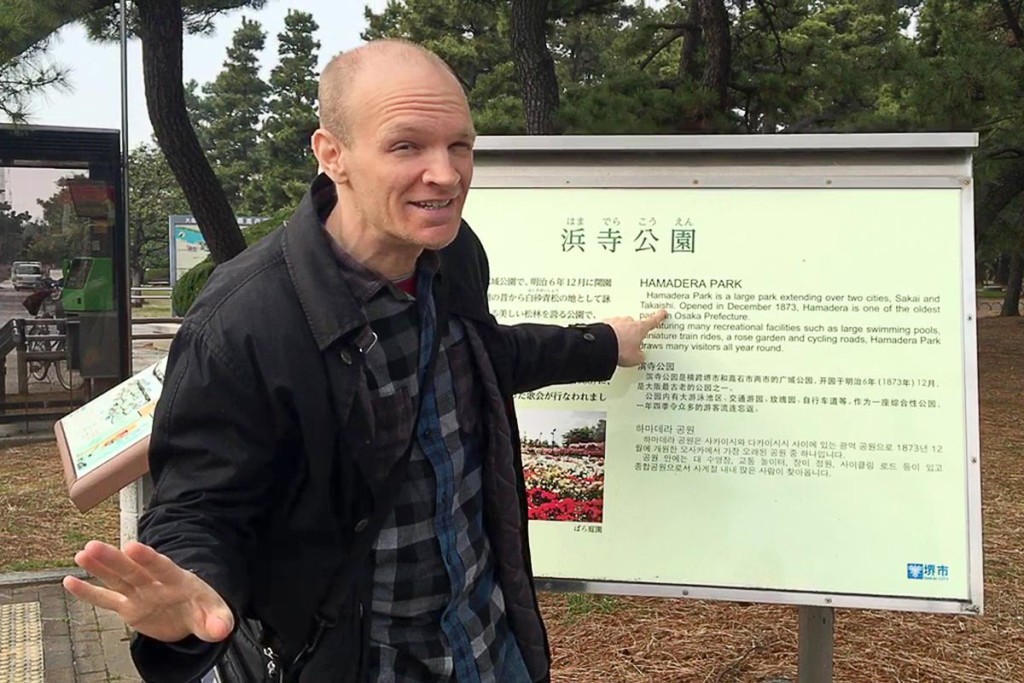
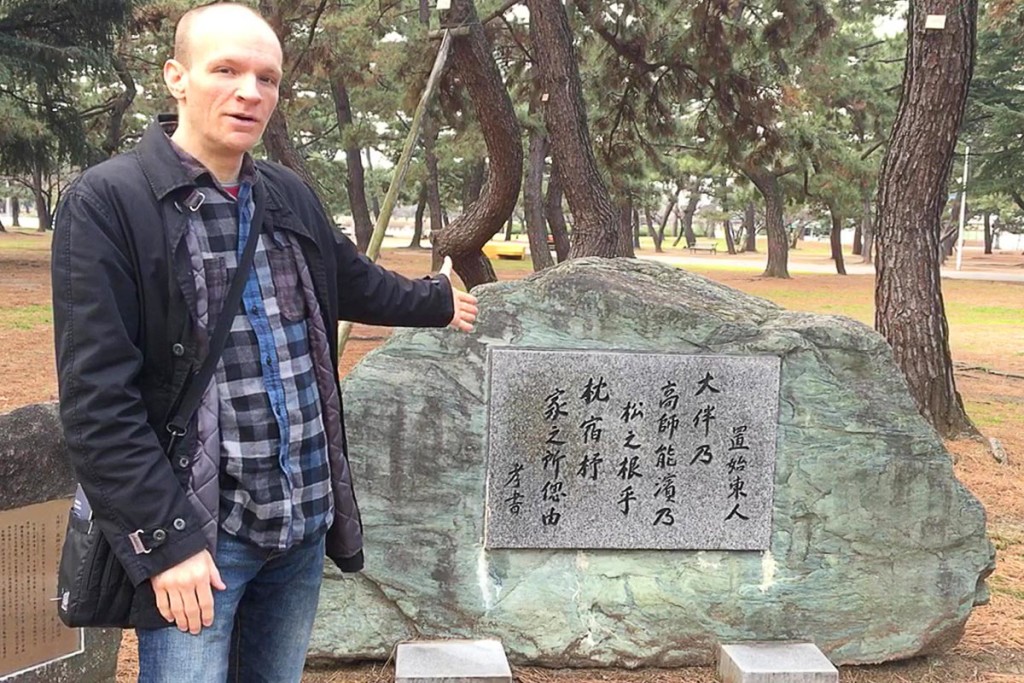
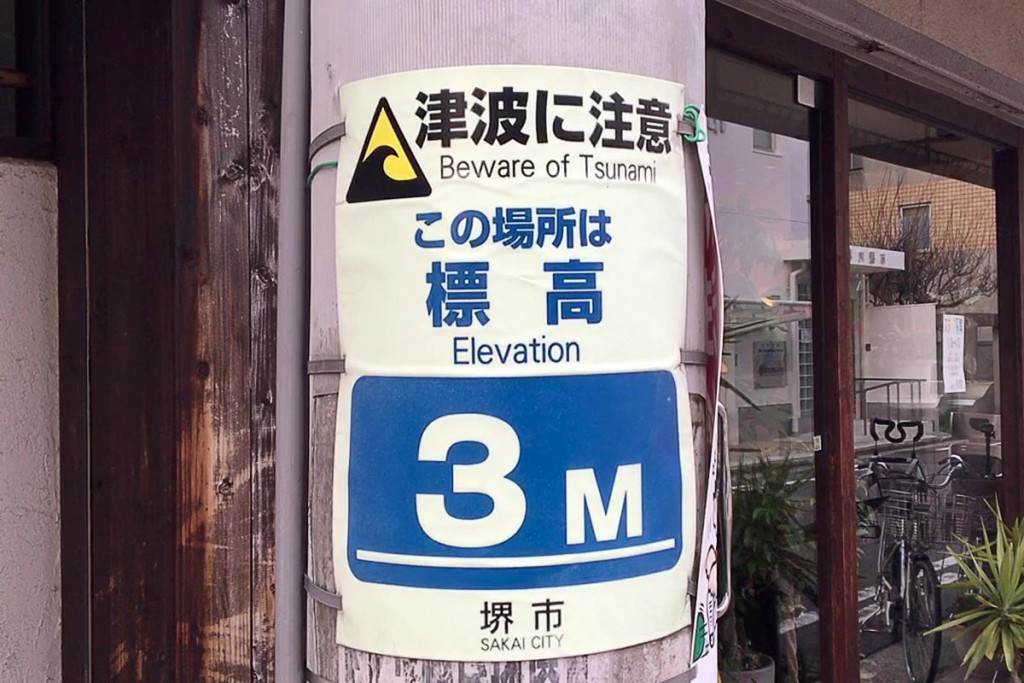
Near the tramway station we had disembarked at, there is a station called Hamaderakoen on the Nankai Line (modern trains, not the tramway). It was the oldest continually-used train station building in Japan, according to Masayo – until about three days ago, when a new one opened up. The original building still stands, but is encased behind a big ugly construction wall. The new station is a prefab metal box, in stark contrast to the stately wooden curves and embellishments of the original structure.
We could still see the old building through a transparent part of the fence; it was like an elephant shackled inside its pen in a zoo. Well-looked after, but not being allowed to live up to its full potential.
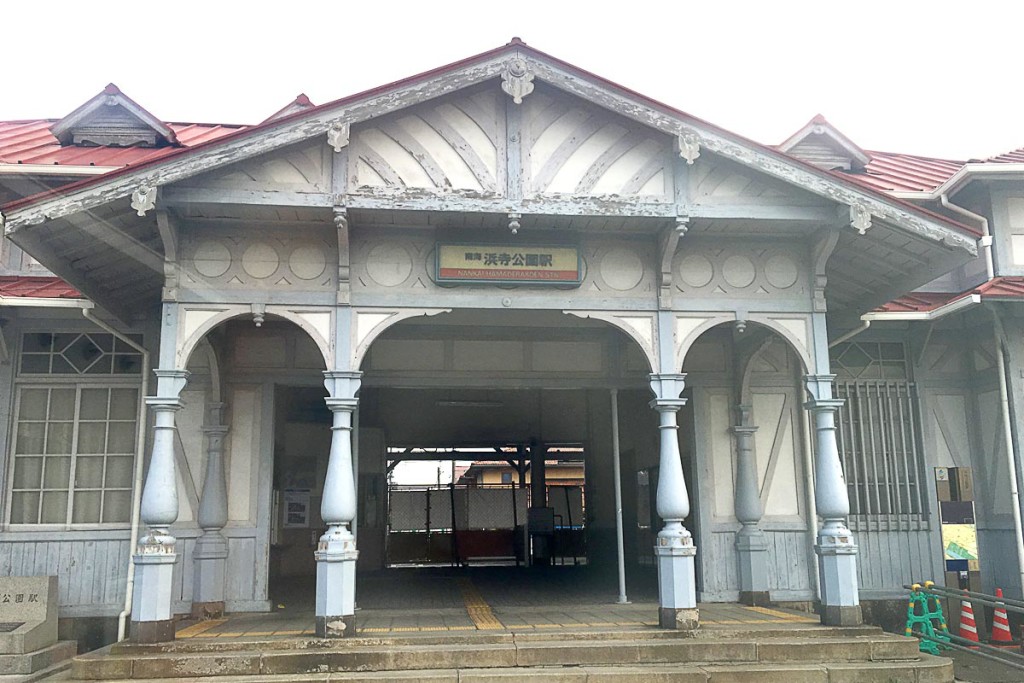
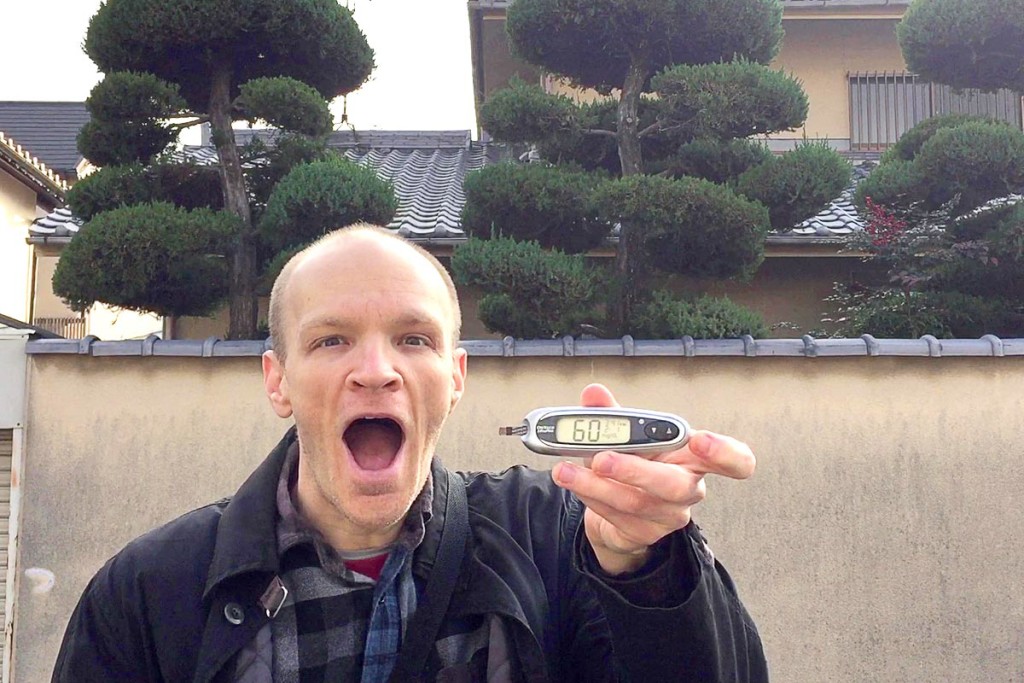
#bgnow a mere 60…
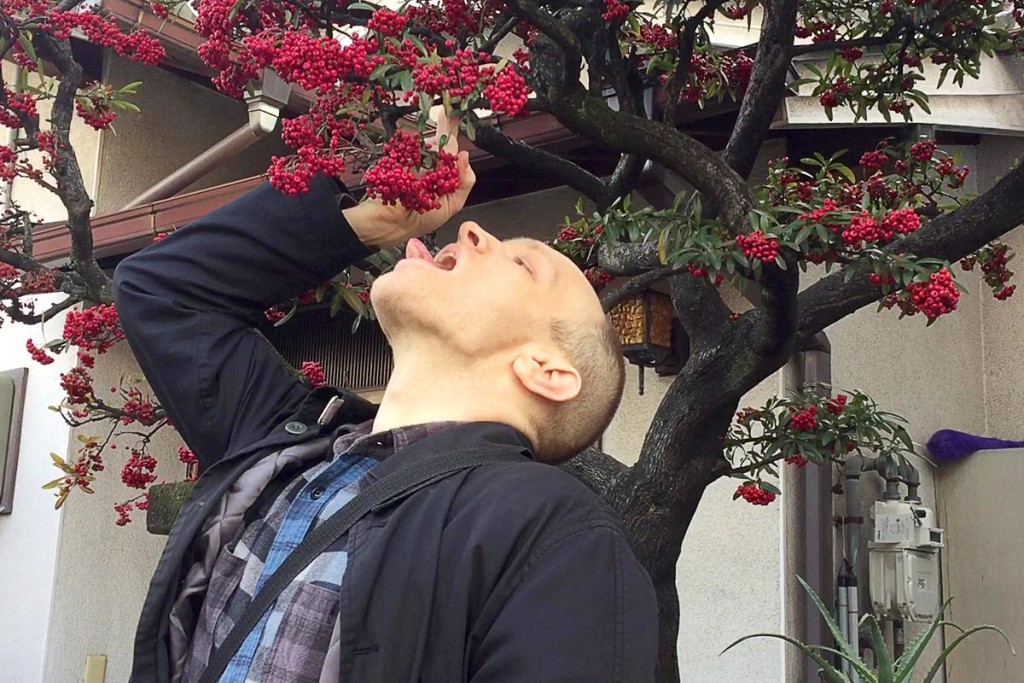
… but low BG snacks grow on trees in Sakai.
Then it was a stroll around the Hamadera area. After a few residential blocks we ended up at a small shrine, where my iPhone decided yet again to die because of the cold. (And it wasn’t even that cold.) As we walked back to the station, I noticed that several houses had unique green roof-tiles. I’ve often seen blue, but rarely green. Maybe that’s Sakai’s thing.
I also noticed that I felt low, so I checked in front of a house with big round sculpted tree branches: I was 60, a mere two hours after lunch. I drank my juice, and Masayo and I stopped at a place called Café Em at Hamaderakoen station for some coffee, where I had a piece of chocolate to bolster my blood sugar further.
Then it was back to the tramway. A train was just leaving and we got on, back across the Yamato River and thus back to Osaka City. This time we had a destination in mind: the grand shrine of Sumiyoshi Taisha.
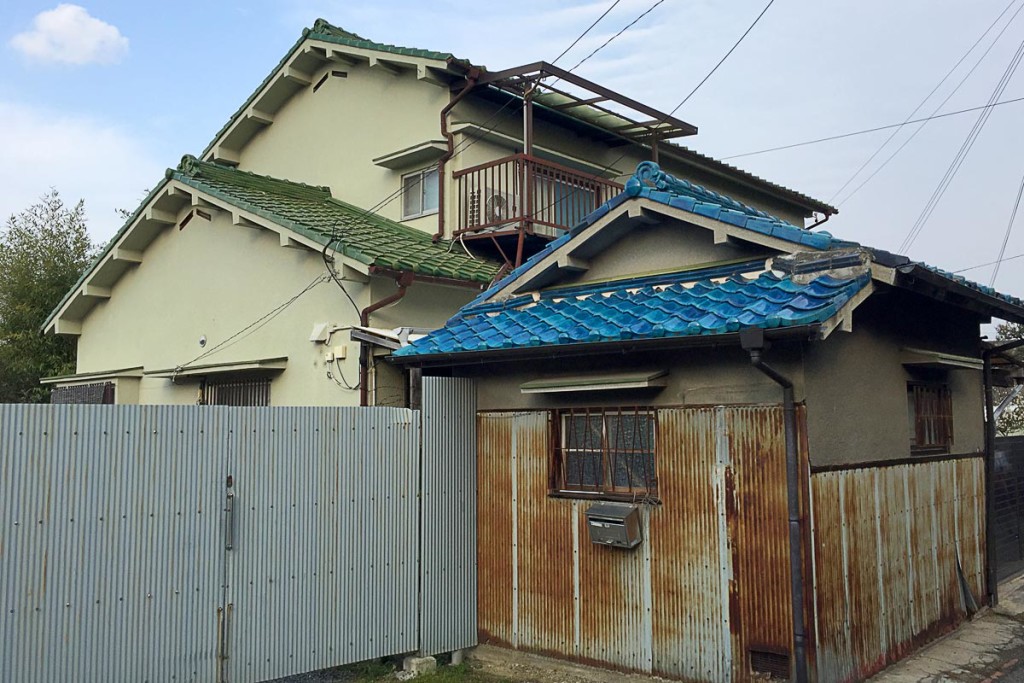
Blue, sure. But I’ve never seen so many green roof tiles as in Sakai.
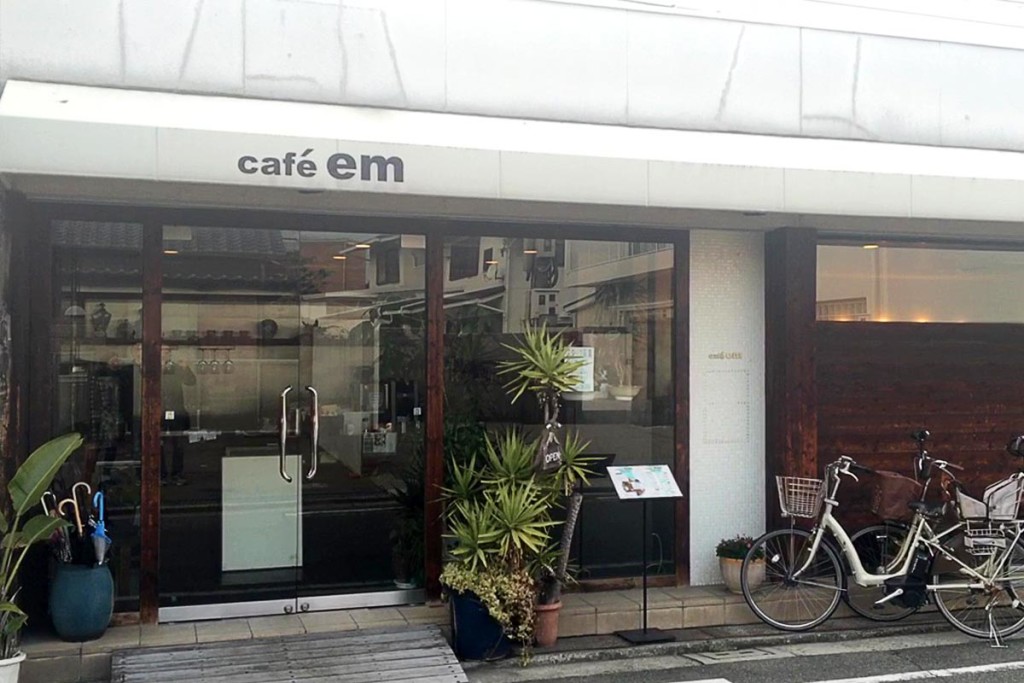
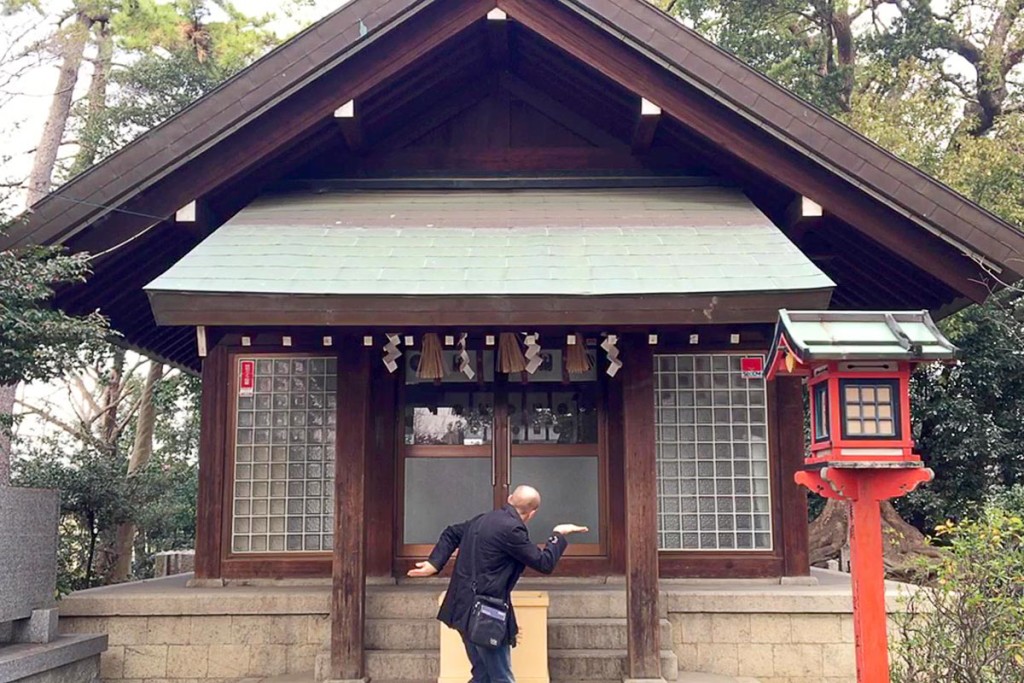
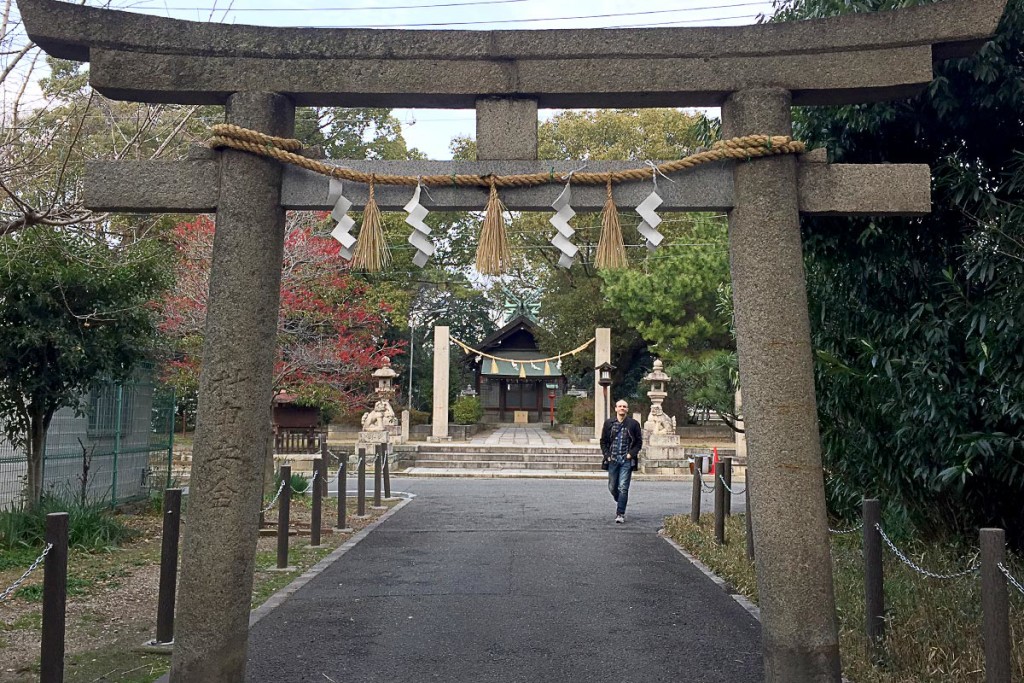
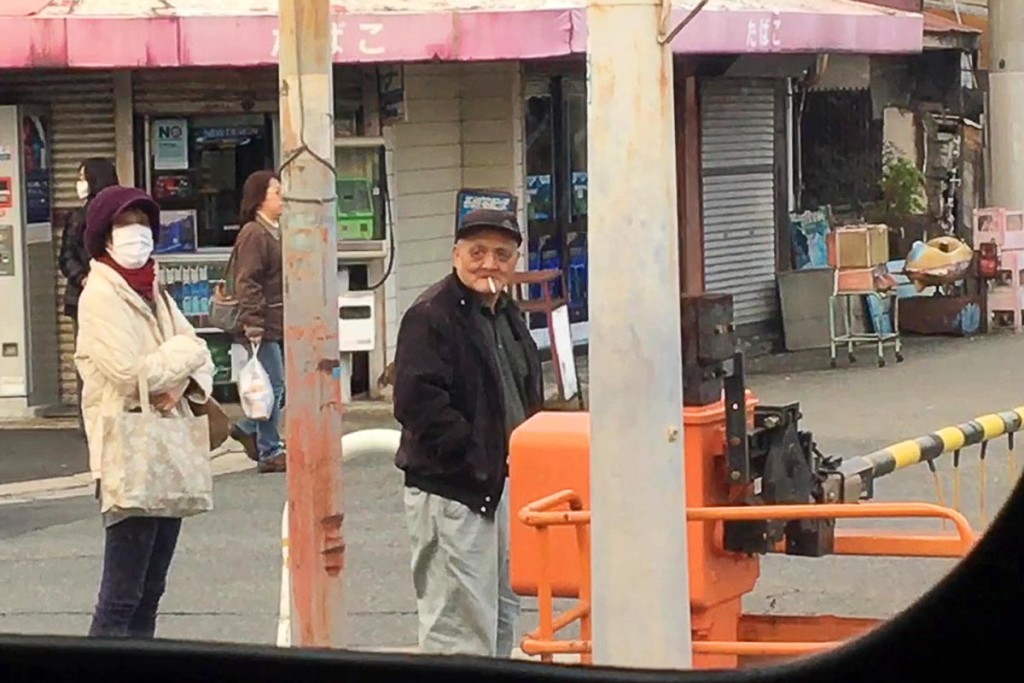
Sumiyoshi Taisha
Sumiyoshi Shrine is a big Shinto complex at Sumiyoshikoen station on the Hankai Tramway. It’s full of giant stone lanterns, donated by various guilds and collectives over the centuries. Each is inscribed with the names of its donors; Masayo translated for me: this one was a fish processing guild; that one a group of companies that transported goods around the rivers of Osaka.
We played around the tall, semi-circular orange wooden bridge in the middle of the shrine grounds, and gawked at the old stone with age-smoothed edges; the daylight was dying and there weren’t many people around. It was a little trip back in time; even a phone booth was decorated in a traditional style.
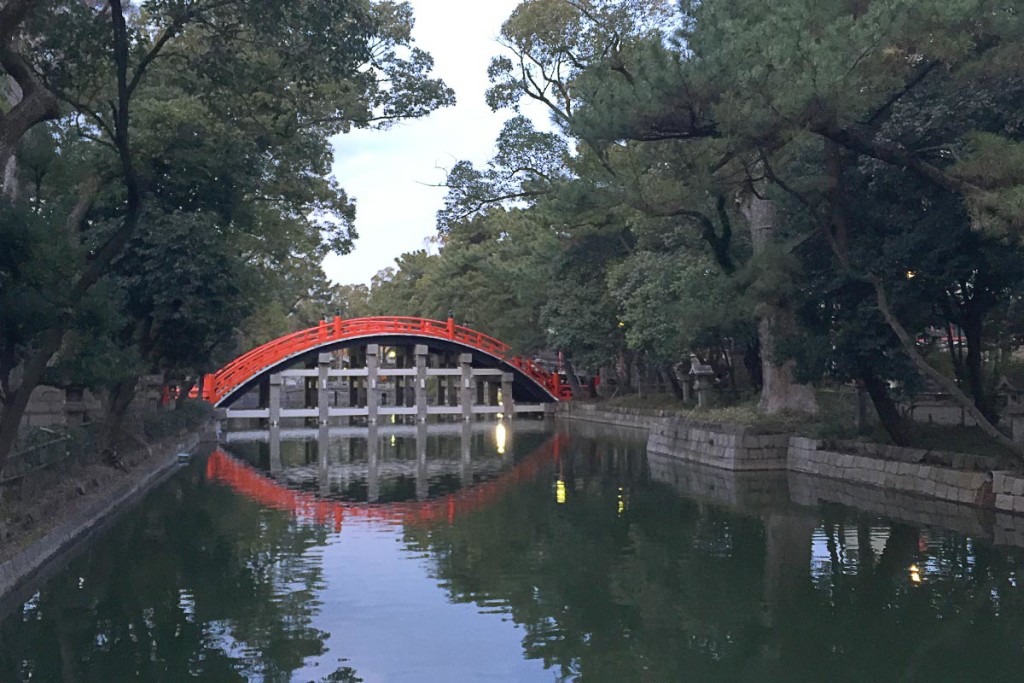
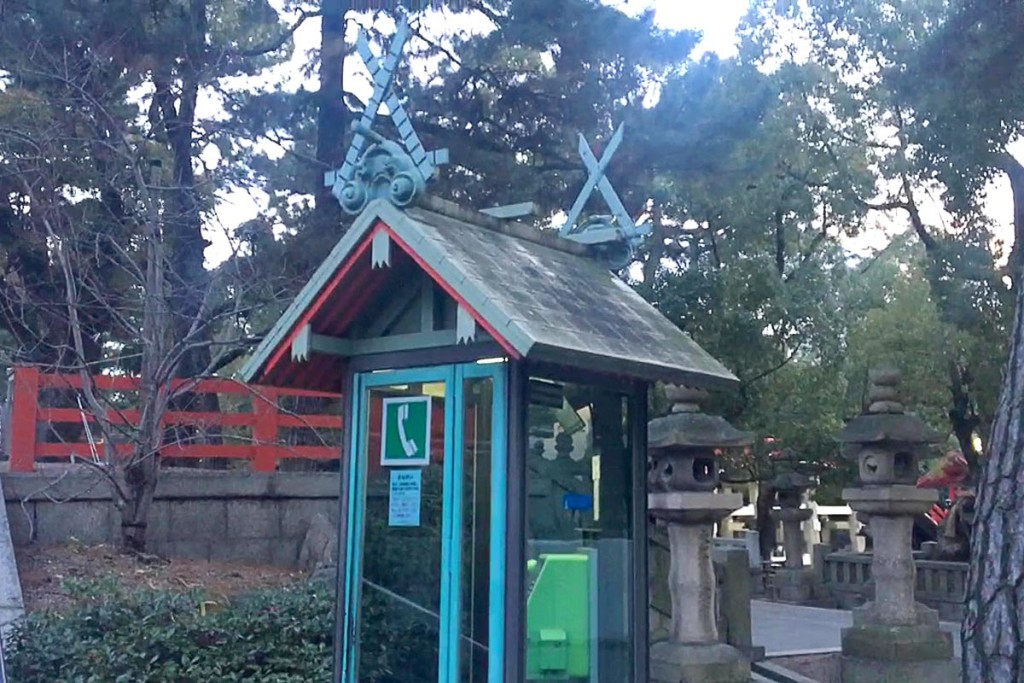
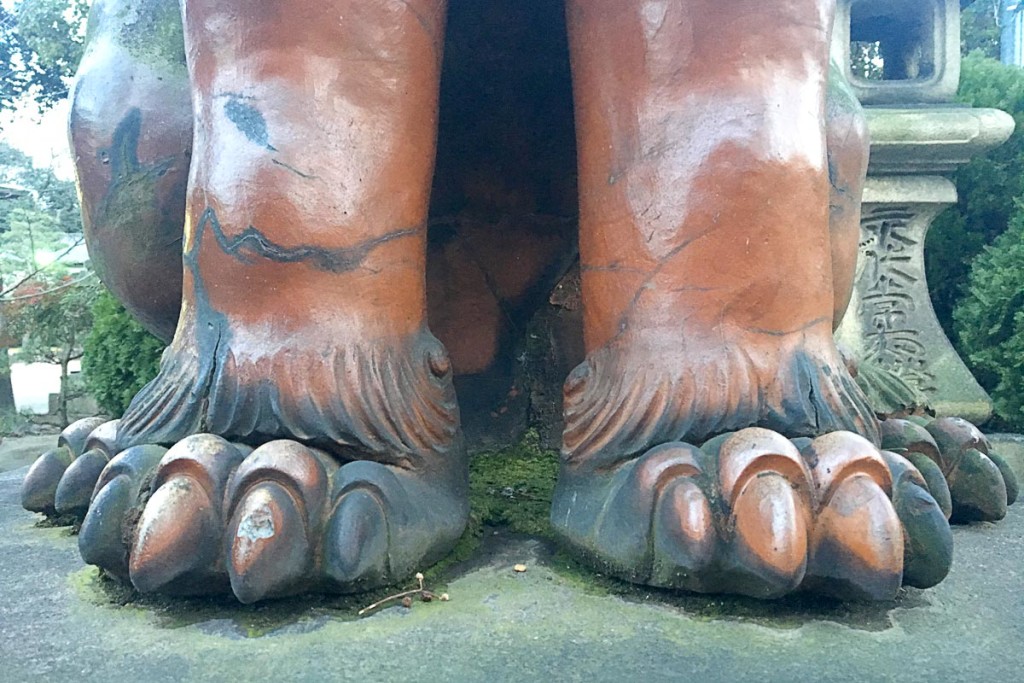
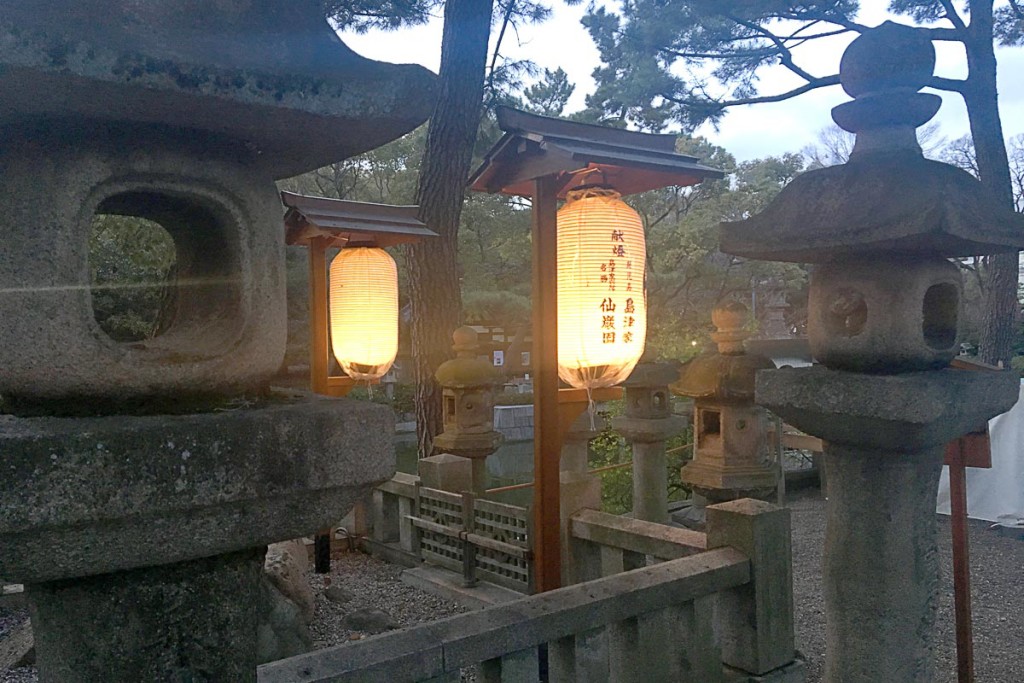
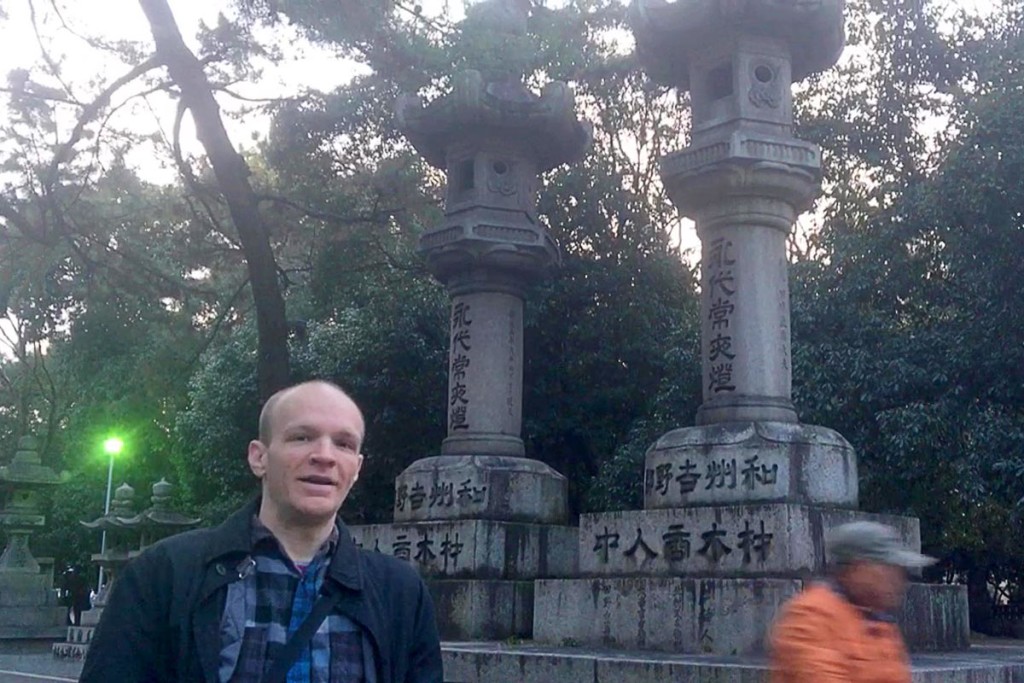
And, having seen almost all of the Hankai Tramway, we decided to complete it, and got back on the Uemachi Line up to its terminus at the other end of the “Y”: Tennoji-ekimae station. It was now dark, and Tennoji is a mass of traffic and lights and shopping centers. Back to reality with a thud. I checked my BG one last time; it was 118.
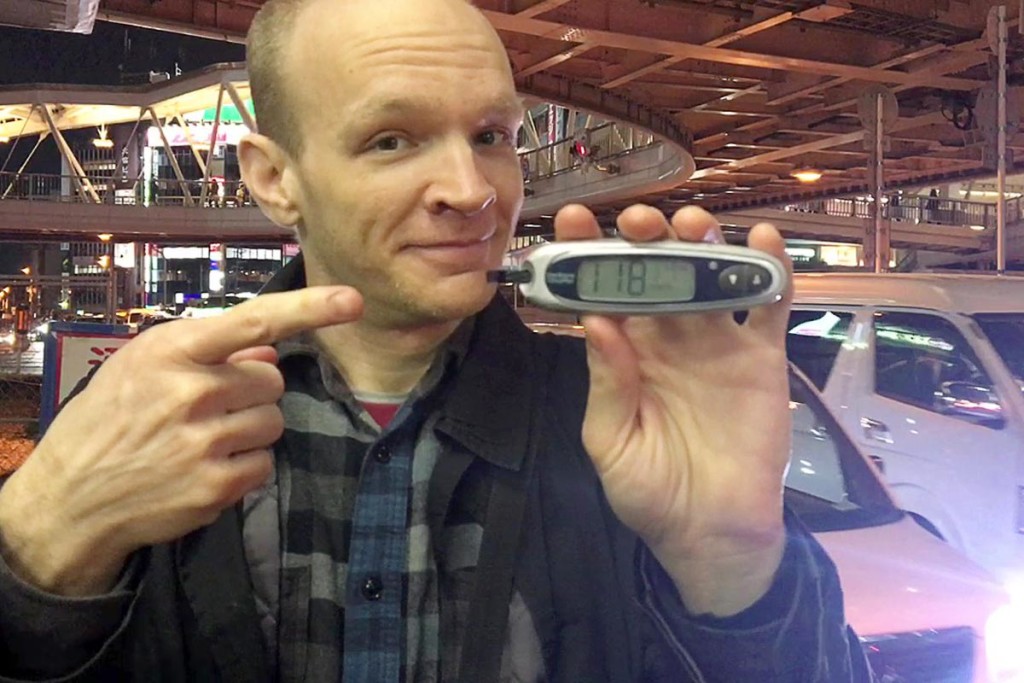
Conclusion
Another great day of mini-travel! The tramway costs ¥210 per ride (roughly $2), no matter the length, so it was economical even with our hopping on and off. (There is a day pass you can get that would have saved us some money, but we didn’t know we’d be using the tram for so many different little trips. Such is the randomness of mini-travel.) The park and old Hamaderakoen station and temples and shrines were all free; even lunch was affordable. (Unlike last week, they remembered to charge me for my beer though.)
I’m getting addicted to this mini-travel stuff; who knew such neat places were so nearby. I bet that’s true everywhere, because any new place is a welcome destination for anyone who truly has travel in their heart!
Thanks for reading. Suggested:
- Share:
- Read: Mini-travel: Akashi, Japan and octopus blood sugar
- Join: Free email newsletter (info and early video access)
- Support: Patreon (much earlier video access and other perks)

Support independent travel content
You can support my work via Patreon. Get early links to new videos, shout-outs in my videos, and other perks for as little as $1/month.
Your support helps me make more videos and bring you travels from interesting and lesser-known places. Join us! See details, perks, and support tiers at patreon.com/t1dwanderer. Thanks!
Want more? Get the free newsletter
Join us! Sign up to my email newsletter to receive updates, behind-the-scenes info,
and early links to my new YouTube videos before everyone else
